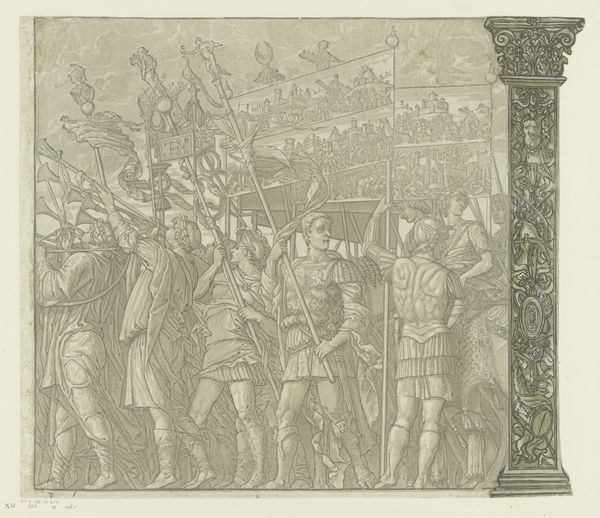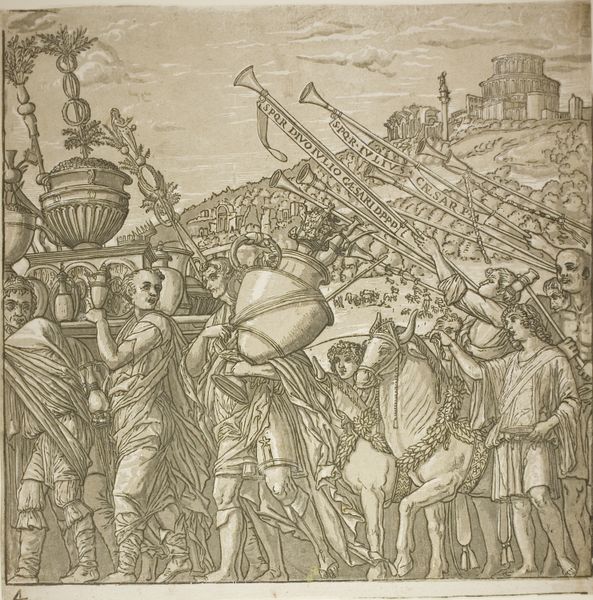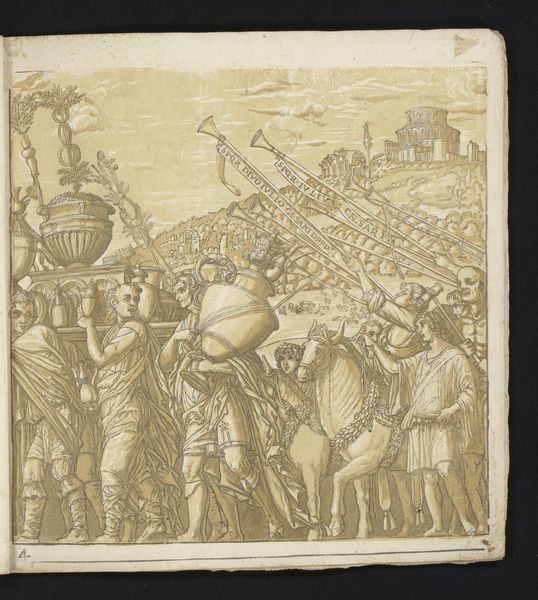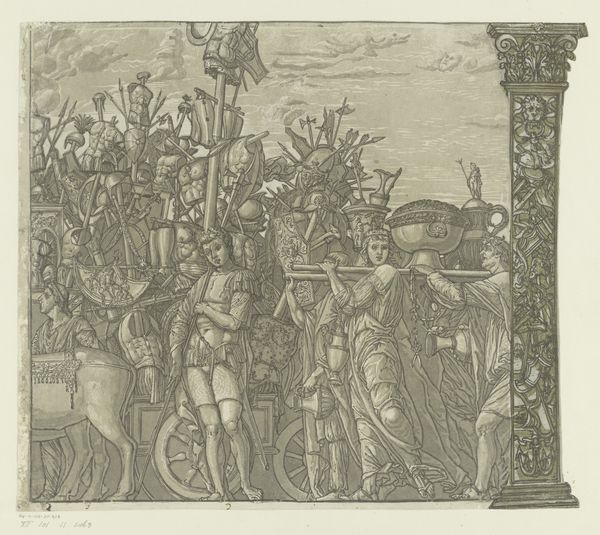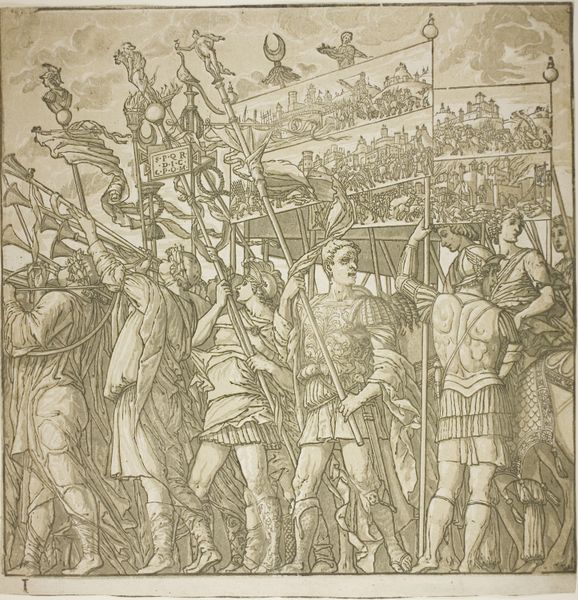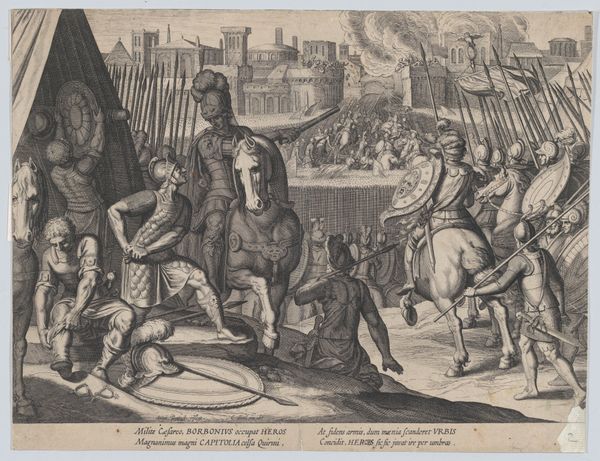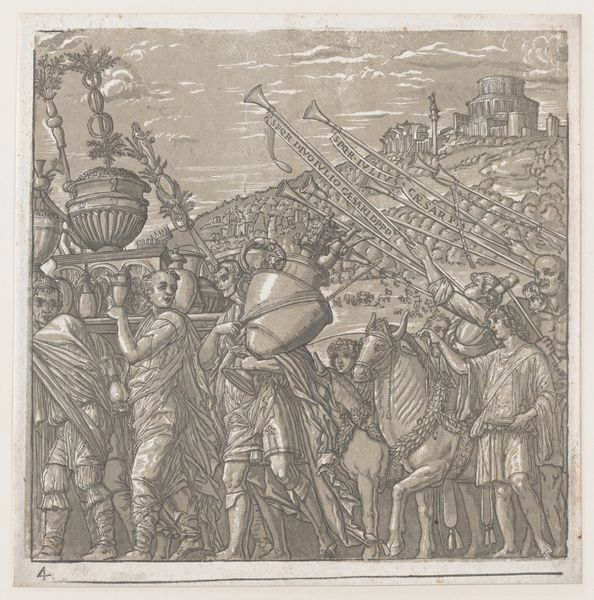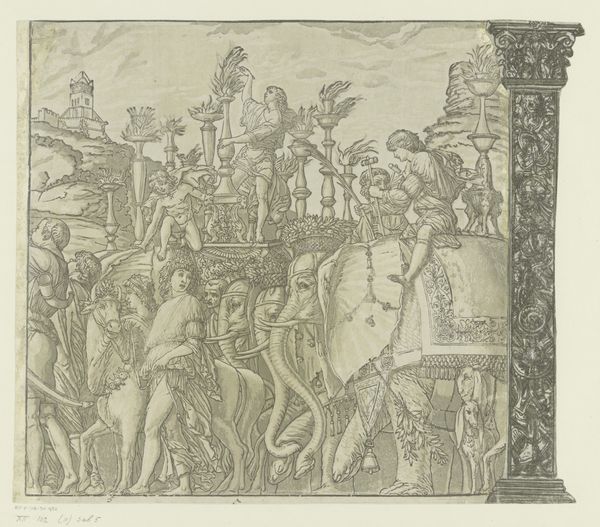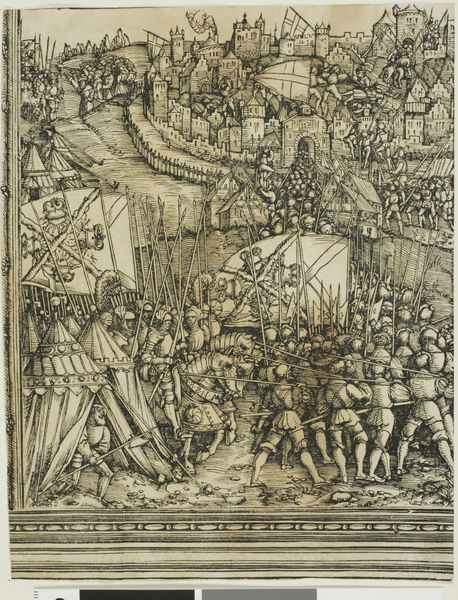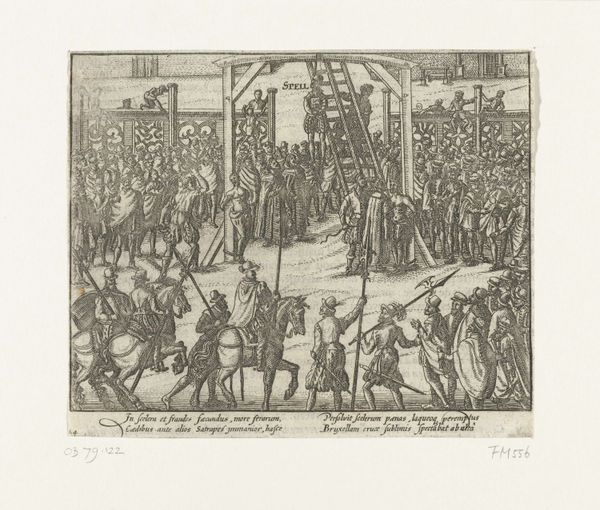
print, engraving
#
allegory
# print
#
figuration
#
line
#
history-painting
#
italian-renaissance
#
engraving
#
realism
Dimensions: height 380 mm, width 370 mm
Copyright: Rijks Museum: Open Domain
Curator: At first glance, it looks like a frieze from an ancient temple, quite imposing, actually. The figures seem frozen in a moment of grand procession, rendered almost entirely in monochrome. Editor: Indeed. We're observing Andrea Andreani’s "Triumph of Julius Caesar", a print from 1599, now housed at the Rijksmuseum. Its historical context is rich. Remember that this period saw the revival of classical themes within European courts and political theory. Curator: You can clearly see that here. The realism is astounding! Note the engraving; the emphasis is put on each line to give definition to the work and bring to life the forms. It definitely exudes a sort of propagandistic strength. Editor: I agree; it is absolutely meant to exalt power. This piece must be understood through the lens of Renaissance power dynamics. Consider the concept of *virtú* as explored by Machiavelli—that blend of cunning, strength, and political skill. This triumph depicts Caesar as the ultimate embodiment of *virtú*, returning victorious. How much does this portray truth and how much embellishment for an audience? Curator: Definitely feels romanticized; this triumphant return suggests invincibility, reinforcing not just Caesar's image but Rome's power. It also alludes to the structure and formality of line that characterized this historical period of artistic endeavor. Editor: Precisely. The allegory plays a crucial role in legitimizing authority. Caesar's "triumph" becomes a symbolic narrative, reinforcing specific sociopolitical ideas and maintaining existing power hierarchies. Curator: Viewing this engraving provokes reflection on how societies perpetuate narratives of triumph and dominance through visual representations. The composition feels carefully crafted, with each figure contributing to the overall glorification. Editor: I concur. We can ask ourselves about the relevance of Caesar’s triumphs in today’s world. Are the figures in this print any different than modern politicians making grand claims and promising safety? The visual encoding allows viewers to find something powerful from the past that still has much influence on the present day.
Comments
No comments
Be the first to comment and join the conversation on the ultimate creative platform.
